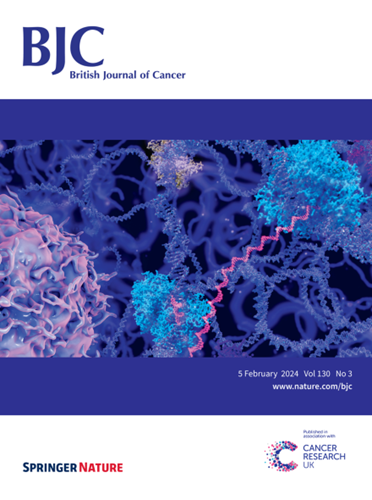Deep learning analysis of histopathological images predicts immunotherapy prognosis and reveals tumour microenvironment features in non-small cell lung cancer
IF 6.4
1区 医学
Q1 ONCOLOGY
引用次数: 0
Abstract
Non-small cell lung cancer (NSCLC) is one of the leading causes of cancer mortality worldwide. Immune checkpoint inhibitors (ICIs) have emerged as a crucial treatment option for patients with advanced NSCLC. However, only a subset of patients experience clinical benefit from ICIs. Therefore, identifying biomarkers that can predict response to ICIs is imperative for optimising patient selection. Hematoxylin and eosin (H&E) images of NSCLC patients were obtained from the local cohort (n = 106) and The Cancer Genome Atlas (TCGA) (n = 899). We developed an ICI-related pathological prognostic signature (ir-PPS) based on H&E stained histopathology images to predict prognosis in NSCLC patients treated with ICIs using deep learning. To accomplish this, we employed a modified ResNet model (ResNet18-PG), a widely-used deep learning architecture well-known for its effectiveness in handling complex image recognition tasks. Our modifications include a progressive growing strategy to improve the stability of model training and the use of the AdamW optimiser, which enhances the optimisation process by adjusting the learning rate based on training dynamics. The deep learning model, ResNet18-PG, achieved an area under the receiver operating characteristic curve (AUC) of 0.918 and a recall of 0.995 on the local cohort. The ir-PPS effectively risk-stratified NSCLC patients. Patients in the low-risk group (n = 40) had significantly improved progression-free survival (PFS) after ICI treatment compared to those in the high-risk group (n = 66, log-rank P = 0.004, hazard ratio (HR) = 3.65, 95%CI: 1.75–7.60). The ir-PPS demonstrated good discriminatory power for predicting 6-month PFS (AUC = 0.750), 12-month PFS (AUC = 0.677), and 18-month PFS (AUC = 0.662). The low-risk group exhibited increased expression of immune checkpoint molecules, cytotoxicity-related genes, an elevated abundance of tumour-infiltrating lymphocytes, and enhanced activity in immune stimulatory pathways. The ir-PPS signature derived from H&E images using deep learning could predict ICIs prognosis in NSCLC patients. The ir-PPS provides a novel imaging biomarker that may help select optimal candidates for ICIs therapy in NSCLC.

组织病理学图像的深度学习分析可预测免疫疗法的预后,并揭示非小细胞肺癌的肿瘤微环境特征。
背景:非小细胞肺癌(NSCLC非小细胞肺癌(NSCLC)是全球癌症死亡的主要原因之一。免疫检查点抑制剂(ICIs)已成为晚期非小细胞肺癌患者的重要治疗选择。然而,只有一部分患者能从 ICIs 中获得临床获益。方法:我们从本地队列(n = 106)和癌症基因组图谱(TCGA)(n = 899)中获得了NSCLC患者的血红素和伊红(H&E)图像。我们基于H&E染色组织病理学图像开发了ICI相关病理预后特征(ir-PPS),利用深度学习预测接受ICIs治疗的NSCLC患者的预后。为了实现这一目标,我们采用了改进的 ResNet 模型(ResNet18-PG),这是一种广泛使用的深度学习架构,因其在处理复杂图像识别任务方面的有效性而闻名。我们的修改包括采用渐进式增长策略来提高模型训练的稳定性,以及使用 AdamW 优化器,该优化器可根据训练动态调整学习率,从而增强优化过程:结果:深度学习模型 ResNet18-PG 在本地队列中的接收者工作特征曲线下面积 (AUC) 为 0.918,召回率为 0.995。ir-PPS有效地对NSCLC患者进行了风险分层。与高危组患者(n = 66,log-rank P = 0.004,危险比 (HR) = 3.65,95%CI:1.75-7.60)相比,低危组患者(n = 40)接受 ICI 治疗后的无进展生存期(PFS)明显改善。ir-PPS在预测6个月PFS(AUC = 0.750)、12个月PFS(AUC = 0.677)和18个月PFS(AUC = 0.662)方面表现出良好的鉴别力。低风险组的免疫检查点分子、细胞毒性相关基因表达增加,肿瘤浸润淋巴细胞数量增加,免疫刺激通路活性增强:利用深度学习从H&E图像中得出的ir-PPS特征可以预测NSCLC患者的ICIs预后。ir-PPS提供了一种新型成像生物标志物,可帮助选择NSCLC ICIs疗法的最佳候选者。
本文章由计算机程序翻译,如有差异,请以英文原文为准。
求助全文
约1分钟内获得全文
求助全文
来源期刊

British Journal of Cancer
医学-肿瘤学
CiteScore
15.10
自引率
1.10%
发文量
383
审稿时长
6 months
期刊介绍:
The British Journal of Cancer is one of the most-cited general cancer journals, publishing significant advances in translational and clinical cancer research.It also publishes high-quality reviews and thought-provoking comment on all aspects of cancer prevention,diagnosis and treatment.
 求助内容:
求助内容: 应助结果提醒方式:
应助结果提醒方式:


